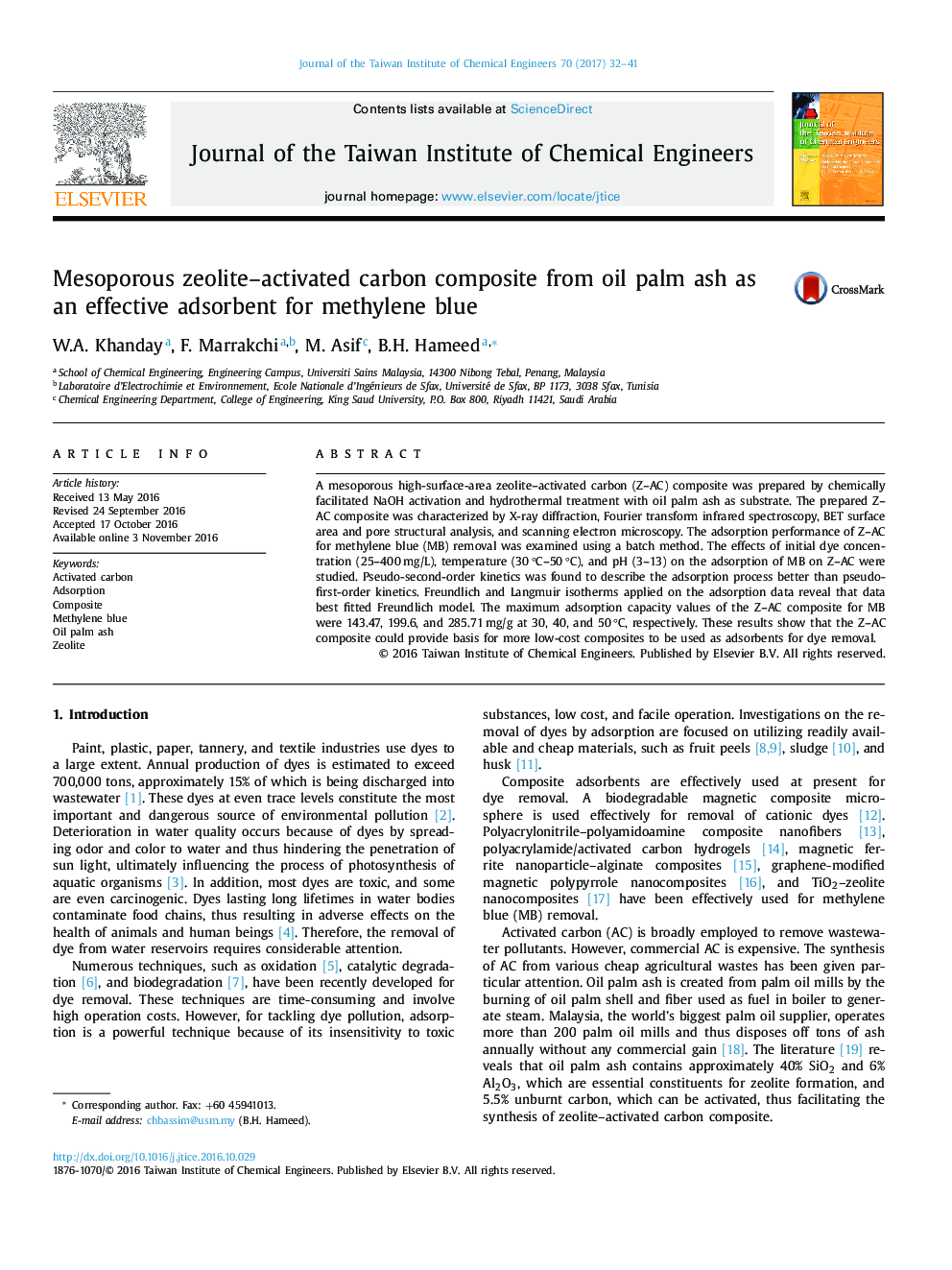| Article ID | Journal | Published Year | Pages | File Type |
|---|---|---|---|---|
| 4998882 | Journal of the Taiwan Institute of Chemical Engineers | 2017 | 10 Pages |
â¢Zeolite-activated carbon (Z-AC) composite was synthesized with oil palm ash as precursor.â¢The adsorption process was well supported by kinetic and isothermal models.â¢The adsorption capacity of Z-AC for MB was superior to similar types of adsorbents.â¢The Z-AC composite represents low-cost composites as adsorbents for dye removal.
A mesoporous high-surface-area zeolite-activated carbon (Z-AC) composite was prepared by chemically facilitated NaOH activation and hydrothermal treatment with oil palm ash as substrate. The prepared Z-AC composite was characterized by X-ray diffraction, Fourier transform infrared spectroscopy, BET surface area and pore structural analysis, and scanning electron microscopy. The adsorption performance of Z-AC for methylene blue (MB) removal was examined using a batch method. The effects of initial dye concentration (25-400 mg/L), temperature (30 °C-50 °C), and pH (3-13) on the adsorption of MB on Z-AC were studied. Pseudo-second-order kinetics was found to describe the adsorption process better than pseudo-first-order kinetics. Freundlich and Langmuir isotherms applied on the adsorption data reveal that data best fitted Freundlich model. The maximum adsorption capacity values of the Z-AC composite for MB were 143.47, 199.6, and 285.71 mg/g at 30, 40, and 50 °C, respectively. These results show that the Z-AC composite could provide basis for more low-cost composites to be used as adsorbents for dye removal.
Graphical abstractDownload high-res image (272KB)Download full-size image
